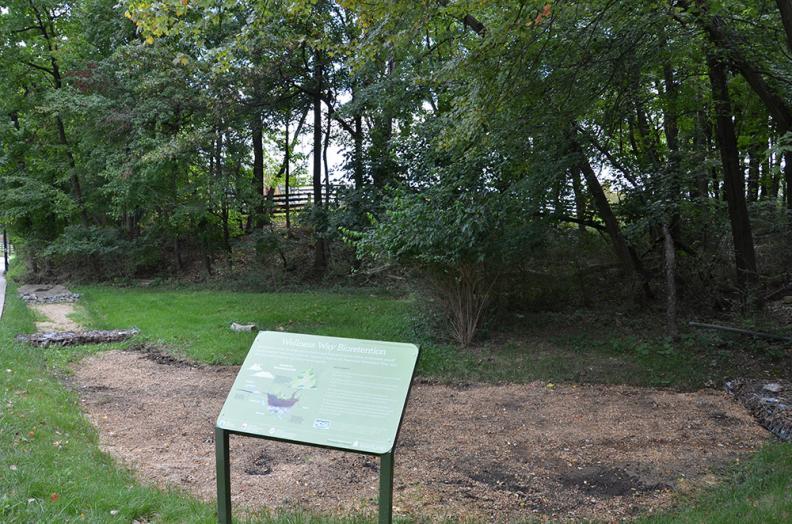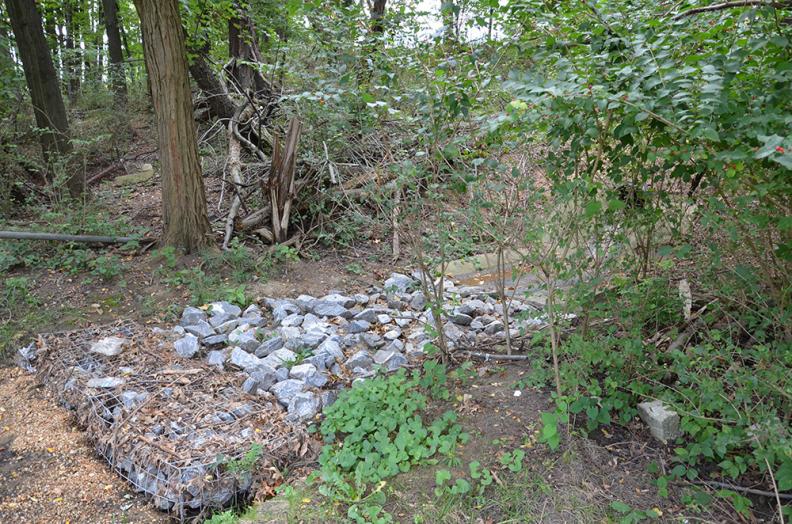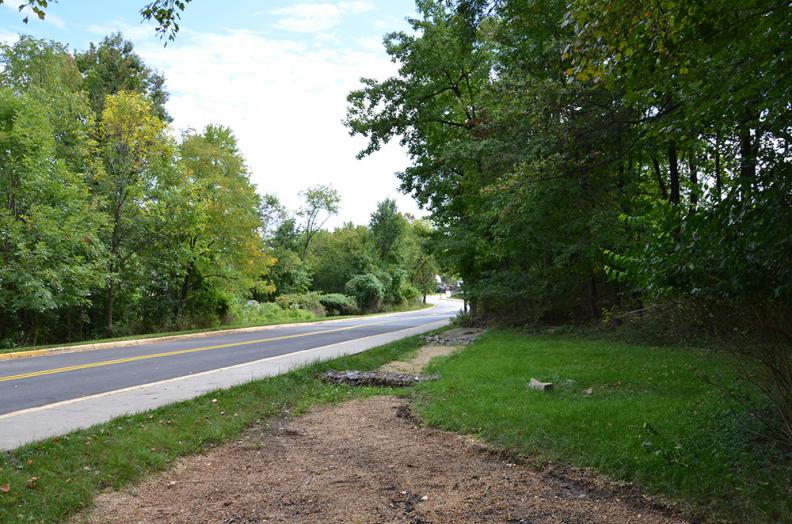
The Maryland Sustainability Engineers (MDSE) have completed their retrofit project of a stormwater management system at Wellness Way after receiving a grant of $25,325 from the University Sustainability Fund. The primary goal of the project is to allow for the treatment of stormwater without sacrificing the existing facility’s purpose of removing high volumes of water during large rainstorms. MDSE teamed up with Facilities Management to complete the project.
As a part of this project, MDSE and Facilities Management transformed a concrete channel into a vegetative swale (bioswale) facility, creating a bioretention area. Bioretention areas allow stormwater runoff to recharge groundwater, and filter pollutants before the runoff reaches natural waterways. They also provide wildlife habitat and improve air quality.

“Projects like these are excellent opportunities to collaborate with campus-wide stakeholders in the pursuit of meeting our stormwater management requirements," said Michael Carmichael, Storm Water Management and Maintenance Inspector for Facilities Management. "FM has now partnered with MDSE on a number of successful projects, and the Wellness Way Bioswale is yet another example of a retrofit opportunity that helps us meet our goals. It is my hope that these projects will serve as learning and teaching opportunities in the advancement of Environmental Site Design (ESD).”
The vegetative swale will absorb runoff that currently flows directly into Campus Creek, and eventually the Chesapeake Bay. Over 17 million people live within the Chesapeake Bay watershed, contributing to pollution and causing an increase in impervious surfaces. This project will reduce the amount of polluted runoff, ultimately having a positive impact on the Chesapeake Bay and the surrounding community.
"This project has the potential to significantly reduce the amount of contaminated stormwater that flows into Campus Creek, and ultimately into the Chesapeake Bay," said Tacy Lambiase, university staff member and Master Watershed Steward with the Anacostia Watershed Society. "It's exciting to see students and Facilities Management staff working together to improve our local waterways."

The vegetated swale has been engineered to slow down stormwater by reducing the impervious surface area and placing densely rooted vegetation to absorb water. Once the water has been filtered through the system, the water will be essentially free of contaminants and safe to be discharged into the drainage system.
Vegetated swales are important in providing an environmentally responsible stormwater management system for controlling flood volumes. The introduced vegetation will encourage water uptake through their roots, and the reduction of impervious areas allows water to infiltrate the soil media. By introducing native plant types and densely rooted vegetation, the swales can further intake water, provide temporary storage, and treat stormwater.